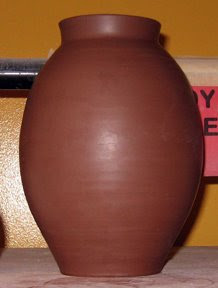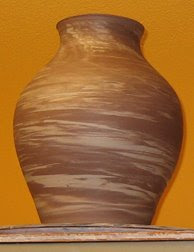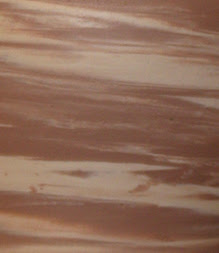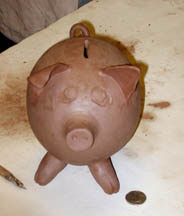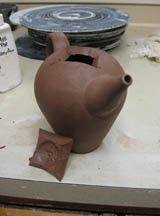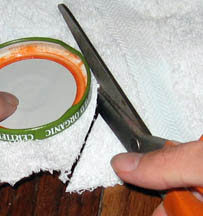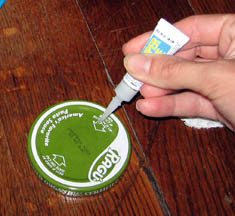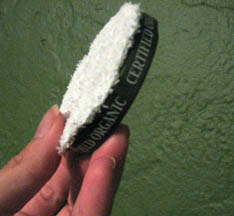 I know, I know. It's hot as hell outside. But these bright blue skies have got me thinking about fall and the storage vessels, mugs and soup bowls that come with the cool weather.
I know, I know. It's hot as hell outside. But these bright blue skies have got me thinking about fall and the storage vessels, mugs and soup bowls that come with the cool weather.In the lidded vessels class Mary Ann is teaching, students are learning to make soup bowls with handles and lids. Not only are they functional and perfect for the cold weather, but they're cute as hell! Lynne pointed out that they'll take up more cabinet space, but you can design them to stack pretty well if you put the handle on high up, like this.
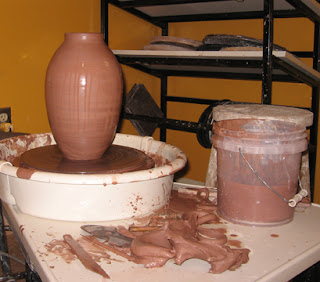
This week I continued with my megalomania, throwing this monstrosity and thinking all the while of famous cases of the disease: Icarus, the Tower of Babel, and Lucifer. When you've pulled all the way to the top, and you're wondering if a shaky hand is going to throw a wobble into the pot, it's easy to see the connection. But throwing big is addicting and I'm likely to keep it up until the cost of clay becomes overwhelming.
I also realized that the first two glorious weeks of the semester are gone. Why so nostalgic? Well, leisure courses have started, which has cut out about 2/3 of the free studio time at the ACC. Also, my first batch of pots is out of the bisque firing. That means it's time for the dreaded glazing phase. I better start doing some test tiles if I want my preciouses to come out anything other than poop brown. Herb came out of the oven, and his bum looked so adorable I had to take a photo.
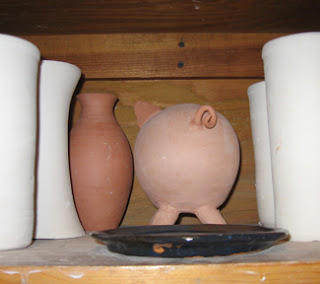
On the bright side, less studio time means more outdoor time. Enjoy this gorgeous weather!
